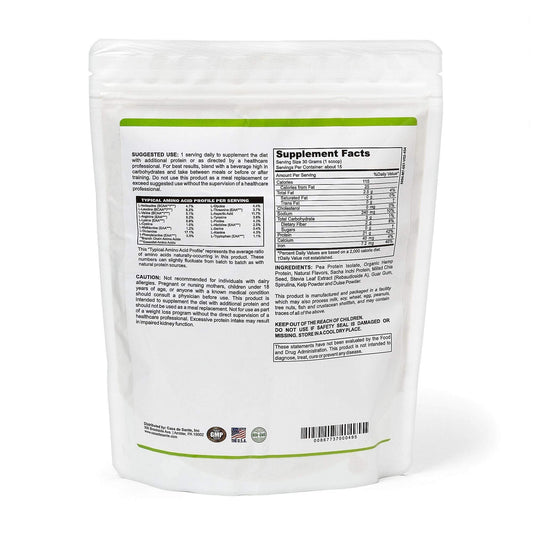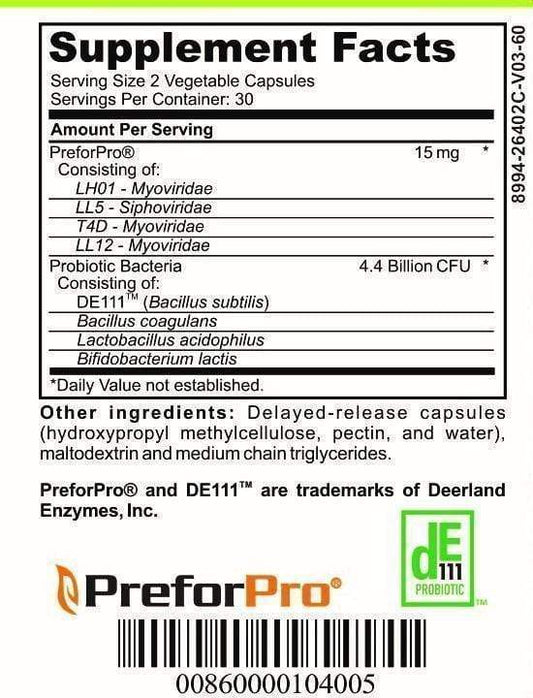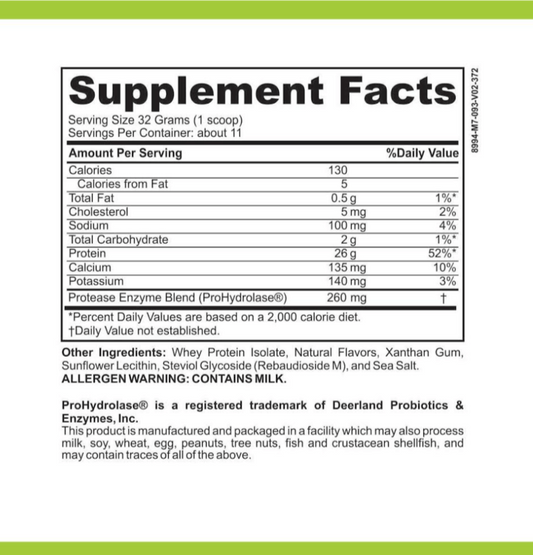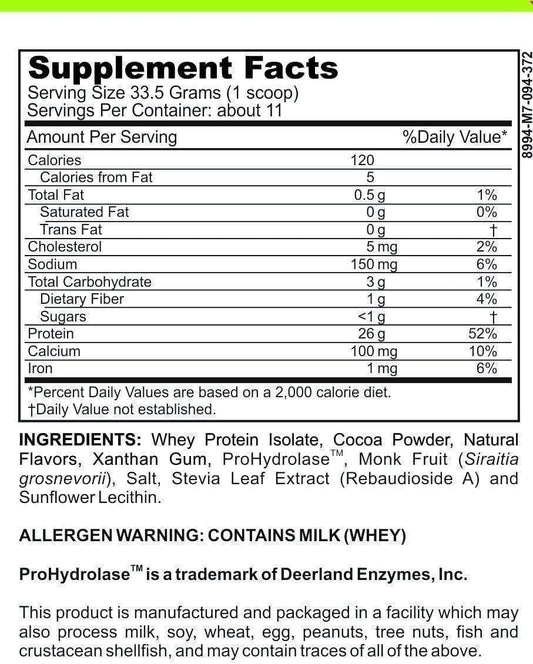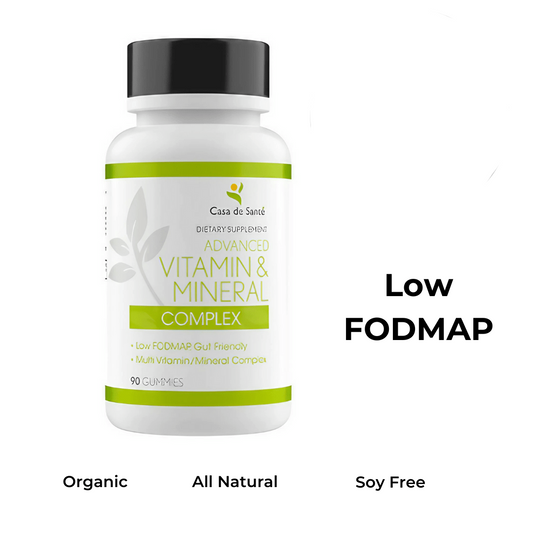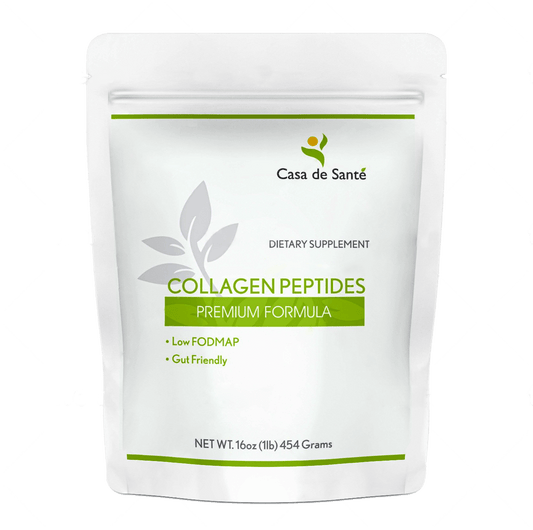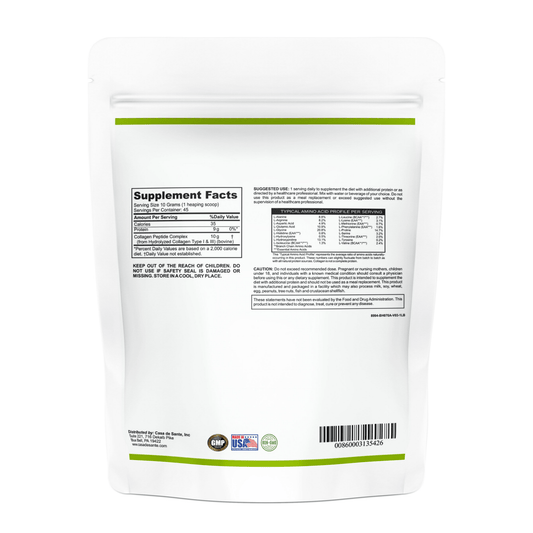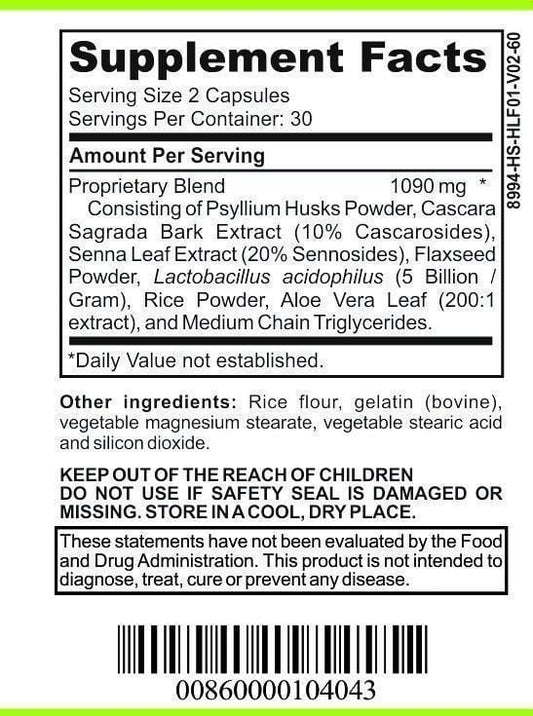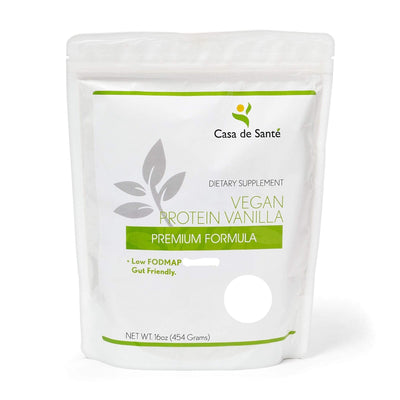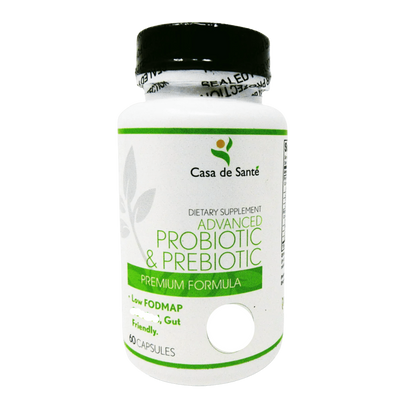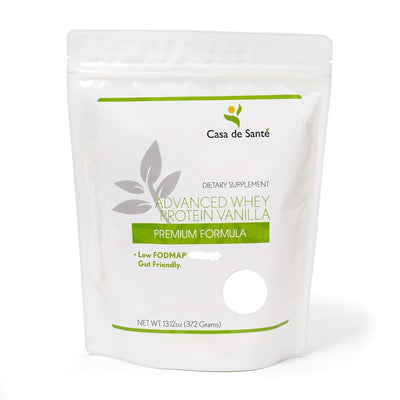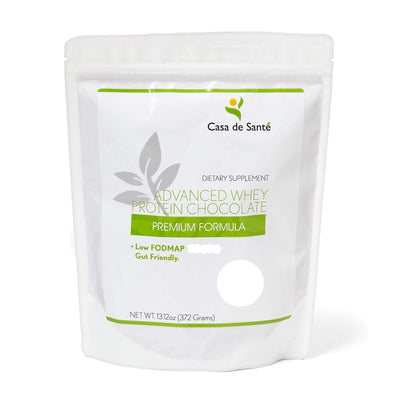Low FODMAP Banana Protein Pancakes Recipe
Low FODMAP Banana Protein Pancakes Recipe
The Low FODMAP Banana Protein Pancakes Recipe is a delicious and nutritious option for those who follow a low FODMAP diet. In this article, we will explore the benefits of the low FODMAP diet, the importance of protein in your diet, and the step-by-step guide to making these mouthwatering pancakes. We will also share some serving suggestions to help you enjoy your pancakes to the fullest.
Understanding the Low FODMAP Diet
The low FODMAP (fermentable oligosaccharides, disaccharides, monosaccharides, and polyols) diet is a dietary approach that helps manage symptoms of irritable bowel syndrome (IBS) and other gastrointestinal disorders. FODMAPs are certain types of carbohydrates that can trigger digestive symptoms such as bloating, gas, and abdominal pain in sensitive individuals.
Living with a sensitive digestive system can be challenging, as even the simplest of meals can lead to discomfort and distress. However, the low FODMAP diet offers hope for those seeking relief from these symptoms. By understanding the principles behind this diet and its potential benefits, individuals can take control of their digestive health and improve their overall well-being.
What is the Low FODMAP Diet?
The low FODMAP diet involves restricting or minimizing the intake of high FODMAP foods and consuming low FODMAP alternatives. FODMAPs are a group of carbohydrates that are poorly absorbed in the small intestine, leading to fermentation and the production of gas in the large intestine. This can cause discomfort and symptoms such as bloating, abdominal pain, diarrhea, and constipation.
By following the low FODMAP diet, individuals can reduce the intake of these fermentable carbohydrates, which in turn decreases the fermentation and gas production in the gut. This can provide relief from the symptoms experienced by those with sensitive digestive systems.
It is important to note that the low FODMAP diet should be followed under the guidance of a registered dietitian or healthcare professional to ensure proper nutrition. They can help individuals identify high FODMAP foods to avoid and provide guidance on suitable low FODMAP alternatives.
Benefits of the Low FODMAP Diet
The low FODMAP diet has been shown to provide relief for individuals with IBS and other digestive disorders. By eliminating high FODMAP foods, many people experience a decrease in bloating, gas, abdominal pain, and other uncomfortable symptoms.
Furthermore, the low FODMAP diet can improve the quality of life for those suffering from digestive issues. It allows individuals to enjoy their meals without distress, enabling them to participate in social activities and enjoy a wide variety of foods.
While the low FODMAP diet may initially seem restrictive, it is important to remember that it is a temporary elimination diet. Once symptom relief is achieved, a dietitian or healthcare professional can guide individuals through a systematic reintroduction of FODMAPs to identify specific triggers and establish a more personalized long-term diet plan.
Overall, the low FODMAP diet offers a promising approach for managing symptoms of IBS and other gastrointestinal disorders. By understanding the principles behind this diet and working with a healthcare professional, individuals can regain control over their digestive health and improve their overall quality of life.
The Importance of Protein in Your Diet
Protein is a crucial macronutrient that plays a vital role in various body functions. It is essential for growth, repair, and maintenance of tissues, as well as the production of enzymes and hormones. A well-balanced diet should include adequate amounts of protein to support overall health and wellbeing.
When it comes to body function, protein is truly a superhero. Not only is it the building block of cells and tissues in the body, but it also supports the growth and repair of muscles, bones, skin, and organs. Imagine protein as the construction crew that tirelessly works to maintain and strengthen your body's infrastructure.
But protein doesn't stop there. It is also involved in the production of enzymes that aid in digestion and metabolism. These enzymes act as the catalysts that break down food and convert it into energy, ensuring that your body can efficiently utilize the nutrients you consume.
Furthermore, protein plays a key role in the immune system. It helps produce antibodies, which are the body's defense mechanism against harmful invaders like bacteria and viruses. Think of protein as the body's own personal army, ready to fight off any threats that may come its way.
Not only does protein protect and repair, but it also helps transport nutrients throughout the body. It acts as a carrier, ensuring that essential vitamins, minerals, and other nutrients reach their intended destinations. Without protein, these vital nutrients would struggle to reach the cells that need them, leaving your body in a state of imbalance.
Sources of Protein
Now that we understand the importance of protein, let's explore the various sources from which we can obtain this essential macronutrient. Animal sources of protein include lean meats, poultry, fish, eggs, and dairy products. These sources are not only rich in protein but also provide important nutrients like iron, zinc, and vitamin B12.
For those following a plant-based diet or looking to incorporate more plant-based protein into their meals, there are plenty of options available. Legumes such as beans, lentils, and chickpeas are excellent sources of protein, as well as fiber. Tofu and tempeh, which are made from soybeans, are also great plant-based protein choices.
If you're a fan of nuts and seeds, you're in luck! These little powerhouses are packed with protein. Almonds, walnuts, chia seeds, and flaxseeds are just a few examples of protein-rich options that can be easily incorporated into your diet.
By incorporating a variety of protein sources into your diet, you can ensure that you receive all essential amino acids and other nutrients necessary for optimal health. Remember, protein is not just limited to one type of food group. Embrace the diversity of protein sources and enjoy the benefits they bring to your body.
Ingredients for Low FODMAP Banana Protein Pancakes
Before diving into the recipe, let's take a look at the ingredients you will need to make these delightful low FODMAP pancakes.
Choosing the Right Bananas
For this recipe, it is essential to choose ripe bananas. Ripe bananas have a higher sugar content, making them sweeter and more flavorful. The natural sweetness of bananas helps eliminate the need for additional sweeteners and enhances the overall taste of the pancakes.
When selecting bananas, look for ones that have a vibrant yellow color with a few brown spots. These brown spots indicate that the bananas are ripe and will mash easily into the pancake batter. Avoid using green or unripe bananas as they will not provide the desired sweetness and may result in a less enjoyable texture.
Additionally, if you prefer a stronger banana flavor, you can opt for bananas that are slightly overripe. These bananas will have more brown spots and will offer a more pronounced banana taste to your pancakes.
Selecting a Low FODMAP Protein Powder
To add an extra protein boost to your pancakes, consider using a low FODMAP protein powder. There are several options available on the market, such as pea protein, rice protein, or hemp protein. Be sure to check the ingredients list to ensure that the protein powder does not contain any high FODMAP ingredients, such as artificial sweeteners or additives.
When choosing a low FODMAP protein powder, it's important to consider your dietary needs and preferences. Pea protein is a popular choice among those following a low FODMAP diet as it is easily digestible and does not contain any major allergens. Rice protein is another excellent option, especially for individuals with soy or dairy sensitivities. Hemp protein, derived from hemp seeds, is rich in essential fatty acids and provides a complete amino acid profile.
Before purchasing a protein powder, read the product labels carefully to ensure that it is certified low FODMAP. Look for certifications from reputable organizations or consult with a registered dietitian who specializes in the low FODMAP diet for personalized recommendations.
Step-by-Step Guide to Making Low FODMAP Banana Protein Pancakes
Preparing the Ingredients
Start by gathering all the required ingredients for the pancake batter. The star of this recipe is the ripe bananas, which will add natural sweetness and moisture to the pancakes. Choose bananas that are slightly overripe, with brown spots on the skin, as they will be easier to mash and will provide a stronger banana flavor.
Once you have your bananas ready, peel them and place them in a mixing bowl. Using a fork or a potato masher, mash the bananas until they are smooth and creamy. This will ensure that they mix well with the other ingredients and create a consistent texture in the pancakes.
In addition to the mashed bananas, you will need low FODMAP protein powder. This powder is a great way to boost the protein content of your pancakes, making them a satisfying and nutritious breakfast option. Choose a protein powder that is low in FODMAPs and suits your dietary preferences.
Next, add gluten-free flour to the mixing bowl. This flour will provide the structure and texture to the pancakes, ensuring that they hold together well. Look for a gluten-free flour blend that is suitable for baking and has a neutral flavor.
To help the pancakes rise and become fluffy, add baking powder to the bowl. This leavening agent will create air bubbles in the batter, resulting in light and airy pancakes. Make sure to use gluten-free baking powder if you are following a gluten-free diet.
Lastly, add a pinch of salt to enhance the flavors of the pancakes. Salt is a key ingredient in many recipes, as it helps to balance and bring out the natural sweetness of the other ingredients.
Once all the ingredients are in the mixing bowl, use a spoon or a whisk to thoroughly combine them. Make sure there are no lumps and that the batter is smooth and well-mixed.
Mixing and Cooking the Pancakes
Now that your pancake batter is ready, it's time to cook the pancakes. Heat a non-stick skillet or griddle over medium heat. This will ensure that the pancakes cook evenly and don't stick to the cooking surface.
Before pouring the batter onto the skillet, lightly grease the cooking surface with a small amount of low FODMAP cooking oil. This will prevent the pancakes from sticking and make flipping them easier. Choose an oil that is suitable for high-heat cooking and has a neutral flavor.
Once the skillet is heated and greased, pour a ladleful of pancake batter onto the skillet. Use the back of the ladle or a spoon to spread the batter into a round shape. This will help the pancakes cook evenly and ensure that they have a uniform thickness.
Cook the pancake for a few minutes until bubbles start to form on the surface. These bubbles are a sign that the pancake is cooking through and the leavening agents are doing their job. Once you see the bubbles, it's time to flip the pancake.
Using a spatula, carefully flip the pancake and cook for an additional minute until golden brown. This will give the pancake a nice crispy exterior while keeping the inside soft and fluffy. Repeat this process for the remaining batter, adjusting the heat if necessary to prevent the pancakes from burning.
Once all the pancakes are cooked, you can serve them warm with your favorite toppings. Consider adding sliced bananas, a drizzle of maple syrup, or a dollop of low FODMAP yogurt for a delicious and satisfying breakfast treat.
Serving Suggestions for Low FODMAP Banana Protein Pancakes
Topping Ideas
There are endless possibilities when it comes to toppings for your low FODMAP banana protein pancakes. Some low FODMAP options include pure maple syrup, fresh berries, lactose-free yogurt, and a sprinkle of chopped nuts or seeds. Get creative and experiment with different combinations to find your favorite pancake topping.
Pairing Suggestions
To make a complete and satisfying meal, consider pairing your pancakes with some additional low FODMAP foods. A side of scrambled eggs or turkey bacon can add extra protein and flavor. Alternatively, a serving of lactose-free cottage cheese or Greek yogurt can provide a creamy and refreshing element to your breakfast.
Now that you have all the information and steps you need, it's time to gather your ingredients, put on your apron, and start making these delightful low FODMAP banana protein pancakes. Enjoy this delicious and nutritious meal that perfectly fits into your low FODMAP diet!


